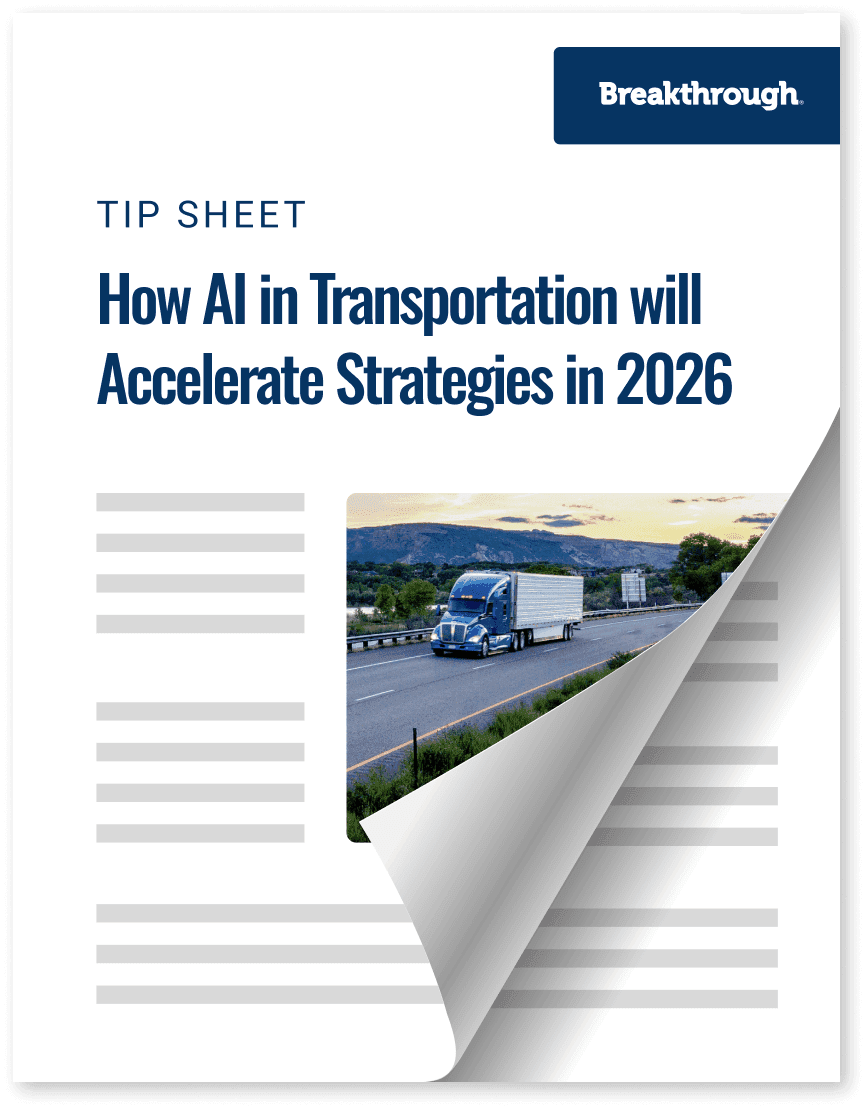How AI in Transportation will Accelerate Strategies in 2026

Trending
Top Posts
Fuel
Why Do Shippers Use The DOE Fuel Surcharge? A History Of The National Fuel Surcharge
5 min read
December 5, 2025
Market Events
How Ukrainian Drone Strikes on Russian Refineries Impact Your Fuel Costs
6 min read
November 20, 2025
Freight
The Definitive Guide on Fuel Management Systems
7 min read
November 11, 2025
7 min read
March 2, 2021

Share:
Table of contents
Browse the table of contents to jump straight to the part you’re looking for
As expectations for pandemic conditions gradually unwind in 2021, consumers will do some unwinding of their own. From movie-going to mobility, many of the hobbies and habits that the pandemic put on pause have started to be reintroduced into our daily lives.
The coming shift in consumer behavior has massive implications for transportation professionals. While some behavioral change will be sticky—like the massive shift toward convenient shopping solutions via eCommerce, curbside pickup, and home delivery—others will shift toward their pre-pandemic norms. “Toward” is an important word. The extent of behavioral change across consumers, how quickly it occurs, and ultimately the consequences for transportation are reasons to be paying close attention to potential inflection points in the fight against COVID-19.
This post introduces Breakthrough’s model tracking the U.S. COVID-19 vaccination rate. The model provides context for discussing how vaccination perception and adherence will influence coming changes in consumer behavior and unpacks its implications for transportation energy and procurement costs.
Read an analysis of the ways the coronavirus pandemic has impacted the freight market, here.
The U.S. effort to expedite the COVID-19 vaccine rollout—Operation Warp Speed—was rolled out under the Trump Administration and continues under a new set of policy objectives made by the Biden Administration. Policy objectives offer guidance for the pace of distribution and the goal of returning to pre-pandemic economic activity. These policies have encouraged us to offer scenarios for achieving herd immunity vaccination levels by the end of Q2 2021. Core assumptions of the model are also important.
Our model considers several core assumptions:

If vaccination progresses to herd immunity by the end of Q2 and refinery utilization increases as the number of vaccinated Americans grows, then the seasonal cycle of increasing production of transport fuel may put downward price pressure onto diesel fuel. Seasonal fuel demand caused diesel prices to fall from May to June during nine of the past 11 years.
The most recent update to our model, through February 22, shows the seven-day moving average vaccination rate has nearly caught up to a pace that would reach lower population estimates of herd immunity by June 30, 2021. This means approximately 55 percent of the adult U.S. population will receive both of their doses by the end of the second quarter. This suggests consumers will have growing confidence to consume services, such as entertainment and travel, as the second quarter progresses.
We also expect the vaccination rate will continue to accelerate through March and into April. The current seven-day moving average vaccination rate falls at over one million doses per day—short of vaccinating 80 percent of the U.S. population by June 30. But the quickening pace of vaccine distribution, more efficient administration, and additional vaccines on the market will continue to push the current vaccination rate toward a more robust level for herd immunity.
Key Takeaway: This suggests consumer behavior may transition toward pre-pandemic activities through the second quarter with a more complete transition to “the new normal” coming in the third quarter.
Diesel demand caught up to 2019 levels in December 2020. Gasoline and jet fuel sales remained about 13 and 30 percent lower, respectively, year-over-year. Why the disconnect between transportation fuel types?
Read about the three things we think shippers need to know about fuel forecasting in 2021 on our blog.
While diesel demand was relatively thriving, gasoline and jet fuel demand languished from greatly reduced business and leisure travel. Refiners reduced their production to account for this consumer behavior, thus decreasing their demand for crude oil. Oil producers reduced their supply given the state of demand. The combined effects of reduced crude oil and transport fuel supply rebalanced global markets.
Oil prices gained upward momentum to end 2020 and at the beginning of 2021 as a result of crude oil production quotas put in place by members of the OPEC+ cartel and a reluctance to increase supply across non-OPEC+ nations. Crude oil prices—should producers maintain their current disciplined approach to support a tight market—will experience upward price pressure as summer approaches because personal mobility and economic activity will improve after widespread vaccination (likely for the U.S., in our view).
The return of demand for fuels used in passenger transportation will encourage refinery utilization to increase toward pre-pandemic levels. As refiners produce more gasoline, the refining process will also put more diesel into the market. Increasing diesel supplies weigh down diesel prices. These dynamics occur routinely because refinery utilization annually ratchets up for the summer driving season in response to greater gasoline demand and its seasonally higher price premium.

If vaccination progresses to herd immunity by the end of Q2 and refinery utilization increases as the number of vaccinated Americans grows, then the seasonal cycle of increasing production of transport fuel may put downward price pressure onto diesel fuel. Seasonal fuel demand caused diesel prices to fall from May to June during nine of the past 11 years.
While higher refinery utilization can offer some downward price pressure onto diesel as a unique transportation commodity, the effect of returning passenger vehicle demand is likely to support higher crude oil prices.
Key Takeaway: The net consequences of U.S. vaccination lead us to believe transportation energy prices will climb during our 2021 to 2022 forecast time horizon._
Vaccines offer the clearest path toward pre-pandemic economic activity. That will likely lead to a shift in consumer spending from goods to services, particularly with expectations that consumers spend more of their income within the industries of travel and entertainment.
We take a deep dive into consumers’ shifting spending habits throughout the pandemic. Read the detailed analysis here.
A shift in spending toward services, even gradually, will affect freight demand in competing ways. First, consumers shifting their wallet share to services may consume fewer goods, decreasing freight demand. In contrast, the U.S. service sector, and its labor force, may buy goods that they did not need or could not afford during the pandemic.

Freight demand soared for many industries during 2020 because consumers shifted their wallet share from spending on services to goods. In fact, freight demand soared despite total consumption in the U.S. remaining nearly six percent lower through 2020 (by our estimates) than where it otherwise may have trended if the pandemic did not occur. Service spending finished 2020 about 9 percent below its potential (see the chart above), while total goods spending increased for both nondurable and durable goods.
Consumer behavior will be influenced by such factors as the substantial changes in the personal savings rate that occurred during 2020 and a low-interest-rate environment. The prospect of a potential fiscal stimulus package that overlaps tax season could also have a significant impact on the market should consumers spend, save, or pay down debt with the funds they receive. So, while we anticipate consumers to shift spending in some capacity from goods to services, the size of total spending in coming quarters may vary.
Key Takeaway: The net consequences of U.S. vaccination lead us to believe freight rates will experience downward price pressure as vaccine distribution continues through 2021._
The amount of data and information discussed during a normal business cycle can be overwhelming, so when disruption occurs, and cycles become volatile, it is beneficial to elevate forecasting principles. Whether focusing upon the energy consumed or the volumes moved across a transportation network, focusing on market fundamentals, drawing comparisons with past markets, and challenging perspectives through a diversity of thought will enable organizations to cut through the noise and keep budgets connected with market dynamics.
For details on the factors shippers should keep in mind related to the future of linehaul rates in 2021, read our analysis here.

5 min read
December 5, 2025
The DOE fuel surcharge is an outdated, inaccurate method for fuel reimbursement. Learn why it costs you money and discover a modern, market-based alternative.
Read more
6 min read
November 20, 2025
Understand the impact of Ukrainian drone strikes on Russian refineries. Learn why diesel prices are volatile and how to protect your budget from market shocks.
Read more
7 min read
November 11, 2025
Discover how fuel management systems cut costs, track emissions, and improve reimbursement accuracy for modern freight operations.
Read more